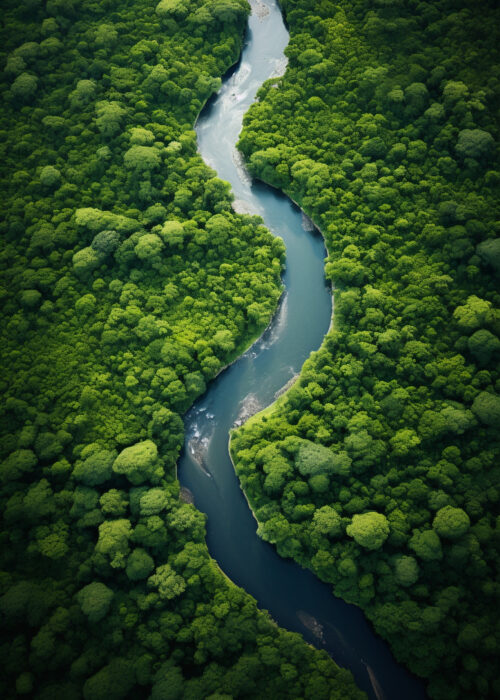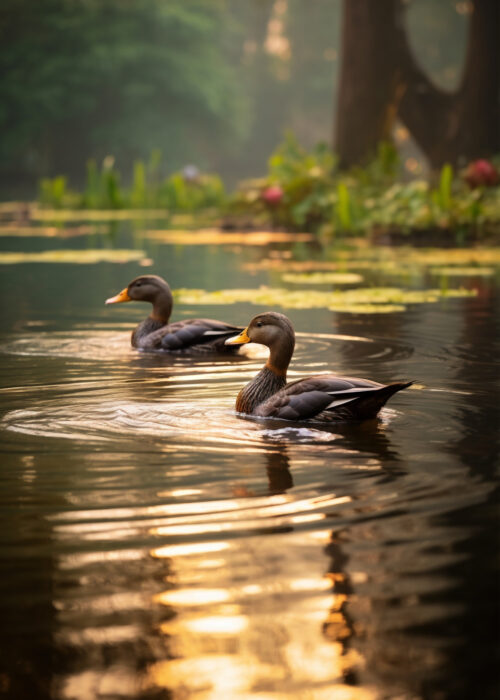
The mighty Danube River flows 1,788 miles from its springs in Germany’s Black Forest to the Black Sea.
Just before reaching the sea it forms the second largest and best preserved of Europe’s deltas: 2,200 square miles of rivers, canals, marshes, tree-fringed lakes and reed islands. The Danube Delta is a wildlife enthusiast’s (especially a bird watcher’s) paradise.
Visitors can spend several days exploring Danube Delta’s canals and passages, teaming with the highest concentration of bird colonies in all of Europe. The maze of canals bordered by thatch, willows and oaks entangled in lianas, offers the perfect breeding ground for countless species of birds, some of them from as far away as China and Africa.
Egyptian white pelicans arrive to the Danube Delta every spring to raise their young, and Arctic geese come here to escape the harsh winters of Northern Europe.
Some 300 species of birds make Danube’s Delta their home, including cormorants, white tailed eagles and glossy ibises. Bird watching season lasts from mid-spring to late summer.
Ecological Characteristics of Danube Delta
The Danube Delta is the Europe’s largest wetland and reed bed, and functions as its most important water purification system. The delta has wet soils temporarily covered with water, with plants adapted to living in wet conditions. The Danube Delta also includes fixed and mobile sand dune areas home to psamophilic plants. Grassland ecosystems are located on higher parts of riverine bars and on the edges of reef beds, adjacent to coastal bars. The water ecosystems of the reserve are very diverse, including the freshwater ecosystems of watercourses, limans and numerous lakes and bays, and brackish water ecosystems in the delta of the Kiliya Arm.
The freshwater ecosystems give the reserve a rich biodiversity: 312 bird species can be found including the glossy ibis (Plegadis falcinellus), the purple heron (Ardea purpurea), the white-tailed eagle (Haliaeetus albicilla) and the largest population of great white pelicans (Pelecanus onocrotalus) in Europe. Fish species include the starlet (Acipenser ruthenus) – a small sturgeon, the thornback ray (Raja clavata) and the spined loach (Cobitis danubialis).
Socio-Economic Characteristics
The local population generally engages in traditional occupations such as fishing, agriculture, animal husbandry, reed harvesting and tourism. Fishing is the predominant and oldest occupation. Various ethnic minorities live in the Delta, the most representative of which are the Gagauz, Lipovans, Russians, Tartars, Turks and Ukrainians,
The area is home to numerous historical, architectural and artistic monuments that lend cultural and historical interest to the localities. Ancient Roman Catholic churches are situated in Malcoci, Sulina and Tulcea.

The Danube Delta began forming roughly 6,000 years ago.
In 4,000 BCE, in one of the bays of the Black Sea, when a barrier of sand generated by the rising level of the sea blocked the bay of the Danube River.
Over time, the bay was filled with sediment, and the Delta’s started advancing towards the Black Sea, building numerous successive branches (the St. George I Branch, the Sulina Branch, the Saint George II branch, and the Chilia/Kilia Branch).
The Danube river brings every year more than 67 million tons of alluvial that contribute to the extending of the Delta and, at the same time, a barometer of the fragile balance of the environment. It is proved that deforestation involves a larger quantity of alluvial and, as a consequence, the risks of suffocating the aquatic plants.
Recorded history states that the Dacians inhabited the Danube Delta region until the Romans conquered the area, and the Goths later invaded it. The Danube Delta became part of the Ottoman Empire in the 15th century, and in 1812 the borders of the Ottoman and Russian Empires were set by the Branches of the Delta. After the defeat of the Ottoman Empire, in 1878, the Delta was split between Romania and Russia, and it was included in UNESCO’s Patrimony in 1991.
In 1998, UNESCO’s Programme on Man and the Biosphere included the whole Danube Delta as a biosphere reserve shared by both Romania and Ukraine.
Danube River splits in 3. The channels of the Danube are Chilia Arm (Bratul Chilia), Sulina Arm (Bratul Sulina), and Sfantu Gheorghe Arm (Bratul Sfantu Gheorghe).
Chilia Arm (Tulcea – Chilia Veche – Periprava), the youngest arm of the Delta, is the northern arm of the Danube Delta and has a length of 111 km. Because the Danube Delta grows annually by approximately 40 m², for a century and a half ago, the Chilia arm forms a secondary delta. The Chilia arm was in the Middle Ages, the main route of navigation in the theDeltaa, and for this reason, was often disputed between the powers of the time.
Sulina Arm (Tulcea – Crisan – Sulina) is the shortest and most straight arm of the Danube Delta. The channel was dug between 1862 and 1902. This process reduced the length of the arm from 93 km to 64 km, doubling the volume of water. It requires permanent dredging works to be navigable for seagoing vessels. Sulina is as well is the most eastern place in Romania.
Sfantu Gheorghe Arm (Tulcea – Sfantu Gheorghe) is the oldest arm, carrying 22% of the volume of water. It is 112 kilometers long and carries 22% of the river’s flow. Sfantu Gheorghe Arm also suffered some transformation in its length, shortening to 70 km of navigable water.
The European Danube commission: The organization was established in 1856 after the end of the Crimean War and was a successful model of European cooperation through a set of internationally accepted rules and procedures.
The Danube Delta covers 799,000 ha, 65,000 ha of which are strictly protected. Approximately 80% of the Danube Delta lies in Romanian and 20% in Ukrainian territory.
The river originates in Germany’s Black Forest and flows southeast for 2.860 km (1780 mi), passing through Austria, Slovakia, Hungary, Croatia, Serbia, Romania, Bulgaria, Moldova and Ukraine before draining into the Black Sea.
Danube Delta Photo Gallery
Explorer's Spirit
- Be the first to read a new story,
- Don’t miss new adventures,
- Embark in a magical Journey,
Submit your email and stay up-to-date!








